If you want to disable Antimalware Service Executable in Windows 11/10, here is how you can do that. It is possible to turn it off with the help of the Windows Security app, Local Group Policy Editor, and Windows PowerShell. Although adding an exclusion works, it may not work all the time since it depends on some other settings as well.
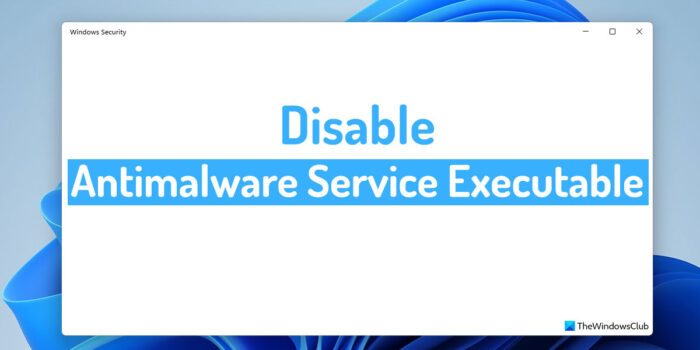
How to disable Antimalware Service Executable in Windows 11/10
To disable Antimalware Service Executable in Windows 11/10, follow any of these methods:
- Use Task Manager to end the process
- Disable Real-time protection
- Disable Periodic scanning
- Disable Microsoft Defender Antivirus Service
Before you proceed, you should know one thing. If you have a 3rd-party security software, these suggestions may help. But if Windows Defender is the only security software installed on your computer, these suggestions may or may not work.
1] Use Task Manager to end the process

It is probably the easiest way to temporarily disable Antimalware Service Executable in Windows 11/10. To end Antimalware Service Executable using Task Manager, follow these steps:
- Press Win+X to open the WinX menu.
- Select Task Manager from the menu.
- Find the Antimalware Service Executable process.
- Select it and click the End task button.
The process will be terminated immediately. However, when you restart your computer, it will be back.
2] Disable Real-time protection
The Antimalware Service Executable process represents the Real-time protection of Windows Security. If you want to disable this process permanently, you need to disable the Real-time protection. However, it is not recommended unless or until you face major issues due to this process.
Using Windows Security:
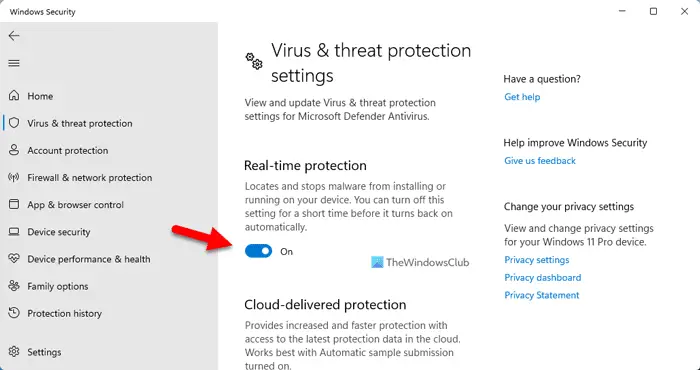
To disable Real-time protection using Windows Security, follow these steps:
- Open Windows Security on your computer.
- Switch to the Virus & threat protection tab.
- Find the Virus & threat protection settings section.
- Click on the Manage settings option.
- Toggle the Real-time protection button to turn it off.
Using Local Group Policy Editor:
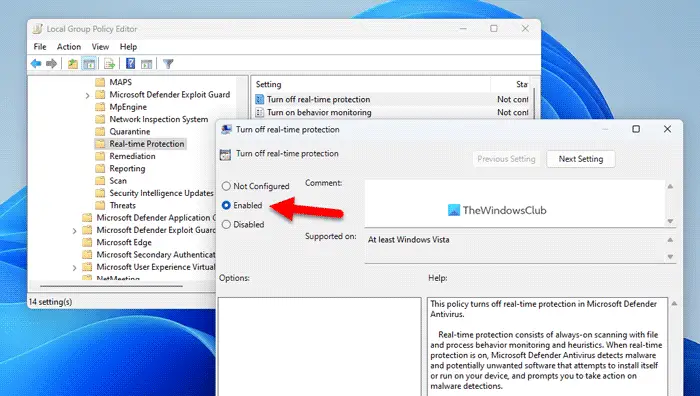
To disable Real-time protection using Local Group Policy Editor, follow these steps:
- Press Win+R to open the Run prompt.
- Type gpedit.msc and click the OK button.
- Navigate to this path: Computer Configuration > Administrative Templates > Windows Components > Microsoft Defender Antivirus > Real-time Protection
- Double-click on the Turn off real-time protection setting.
- Choose the Enabled option.
- Click the OK button.
3] Disable Periodic scanning
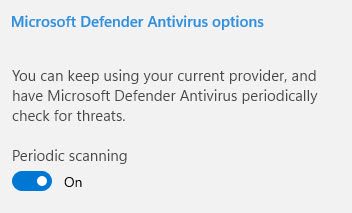
Open Windows Security > Virus and threat protection and disable Periodic scanning. This will likely help.
4] Disable Microsoft Defender Antivirus Service
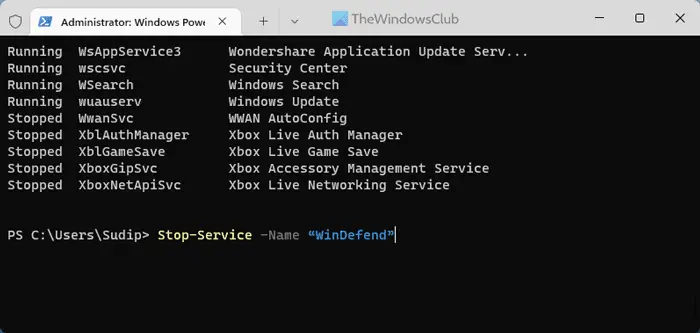
It is the last thing you can do to disable Antimalware Service Executable in Windows 11. However, if the Services panel doesn’t allow you to do that, you can use Windows PowerShell to get the job done. To disable Microsoft Defender Antivirus Service using Windows PowerShell, follow these steps:
- Press Win+X to open the WinX menu.
- Select Terminal (Admin) from the menu.
- Click on the Yes button in the UAC prompt.
- Make sure that the Windows PowerShell instance is opened.
- Enter this command: Stop-Service -Name “WinDefend”
After that, you can close the PowerShell window.
Read: How to disable Microsoft Defender in Windows
How do I permanently disable Antimalware Service Executable?
To permanently disable the Antimalware Service Executable process, you need to disable the Real-time protection in Windows Security. There are mainly two ways to do that. First, you can use the in-built option in Windows Security. Second, you can use the Local Group Policy Editor to get it done.
Read: Service Host DCOM server process launcher high CPU, Memory usage
Can I turn off Antimalware Service Executable?
Yes, you can turn off Antimalware Service Executable in Windows 11. There are three methods to do it in Windows 11 as well as Windows 10. For your information, all the methods are mentioned in this article in detail, and you can follow any one of them to deactivate this process.
I hope this article helped.
Read: Antimalware Service Executable (msmpeng.exe) High CPU, Memory, Disk Usage.